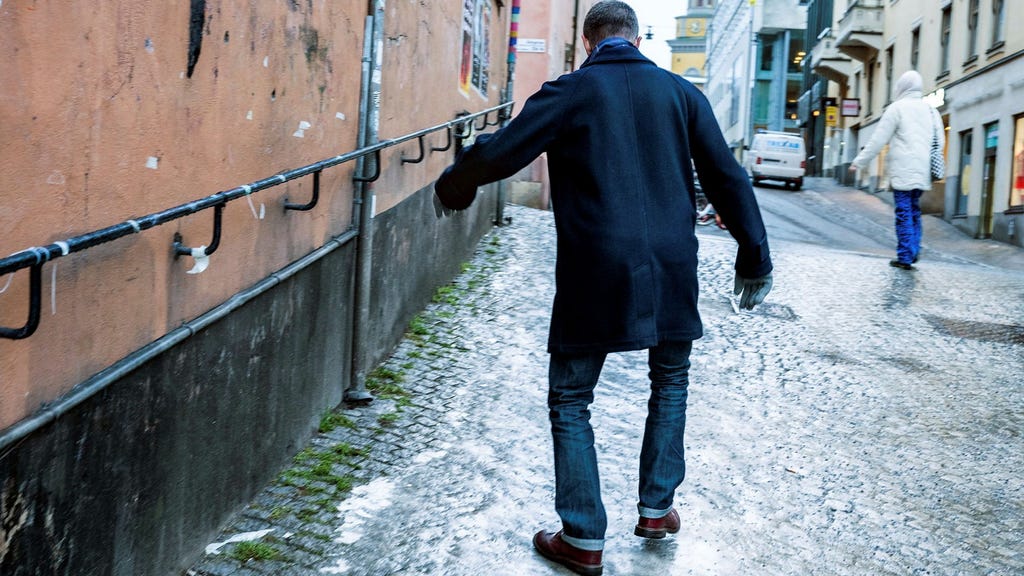The Growing Threat of Freeze-Thaw Cycles in a Changing Climate
Fluctuating temperatures, a hallmark of recent winters, have led to a surge in slip-and-fall accidents, placing a significant strain on healthcare facilities. While winter’s icy grip remains firm, the dangers of freeze-thaw cycles, known as zero crossings (where temperatures oscillate around the freezing point within a 24-hour period), are becoming increasingly prominent. This phenomenon, characterized by melting snow and ice refreezing on surfaces, creates treacherous conditions for pedestrians and drivers alike. The Swedish Meteorological and Hydrological Institute (SMHI) has issued numerous warnings for sudden black ice, particularly in northern Sweden, leading to disruptions in public transport and an increase in traffic accidents. This escalating problem is not merely a seasonal inconvenience; it’s a tangible consequence of climate change, with potentially far-reaching implications for public health and safety.
The impact of zero crossings is multifaceted. The primary concern is the formation of black ice, a thin, transparent layer of ice that is notoriously difficult to detect, posing a significant hazard to both pedestrians and motorists. This necessitates increased efforts in road maintenance, including salting and sanding, to mitigate the risk of accidents. Beyond the immediate danger of falls and collisions, the increased workload on healthcare systems is another significant consequence. Emergency rooms experience a surge in patients with injuries ranging from minor sprains to serious fractures, particularly among the elderly, who are more vulnerable to falls and their complications. The Public Health Agency of Sweden, in a 2021 analysis, highlighted the escalating risk associated with these freeze-thaw cycles, classifying the potential health consequences as "high," the second highest level on their risk scale. This assessment underscores the growing need for proactive measures to address this emerging challenge.
The Public Health Agency’s analysis revealed a stark reality: on a typical day with icy conditions in the Stockholm area, approximately 200 individuals seek medical attention for slip-and-fall injuries. This statistic not only highlights the immediate burden on healthcare resources but also underscores the broader societal impact, including lost productivity and the emotional toll on individuals and their families. The Swedish Transport Administration has also acknowledged the implications of zero crossings in their climate adaptation work, recognizing the potential for increased traffic accidents and disruptions. This growing awareness among various government agencies emphasizes the need for a coordinated and comprehensive approach to mitigate the risks associated with this phenomenon.
Climate change is a key driver of this escalating problem. While the global average temperature continues to rise, regional climate patterns can exhibit more complex variations. In the case of Sweden, the middle and northern parts of the country are experiencing an increase in zero crossings during the winter months. This trend is directly linked to milder winters, with temperatures hovering around the freezing point more frequently, creating ideal conditions for the formation of black ice. Conversely, southern Sweden, traditionally more prone to freeze-thaw cycles, is experiencing a decrease in these events as winters become consistently milder, with temperatures less likely to dip below freezing. This regional variation highlights the complex interplay between global climate change and local weather patterns.
Data comparing the periods 1961-1990 and 1991-2020 reveals a clear upward trend in the number of zero crossings across most measuring stations in central and northern Sweden during the winter months. SMHI’s projections indicate that this trend is likely to continue in the coming years, posing a growing challenge to these regions. The shift in risk towards the north underscores the dynamic nature of climate change and the need for adaptation strategies that are tailored to specific regional vulnerabilities. While southern Sweden may experience some respite from this particular climate-related hazard, the overall impact of climate change on the country remains significant, necessitating ongoing monitoring and adaptation efforts.
The increasing frequency of zero crossings in a changing climate presents a multifaceted challenge, impacting public health, safety, and infrastructure. The growing awareness of this issue among government agencies and research institutions is a crucial first step. However, translating this awareness into effective action requires a multi-pronged approach. This includes improved weather forecasting and public awareness campaigns to inform citizens about the risks and preventative measures. Investing in infrastructure improvements, such as enhanced road maintenance practices and pedestrian-friendly urban design, is also crucial. Furthermore, continued research into the long-term impacts of freeze-thaw cycles and the development of innovative solutions will be essential to mitigate the risks and build resilience in the face of a changing climate. The challenge of increasingly frequent zero crossings serves as a stark reminder of the interconnectedness between climate change and human well-being, urging proactive measures to adapt to a rapidly evolving environment.














